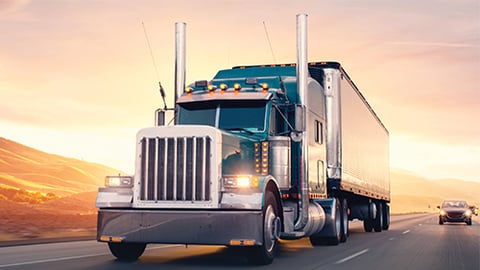How Business Intelligence Is Steering More Profitable Decisions for Grocery
Almost every industry today is using “big data” in some fashion, including those in grocery organizations. Big data is typically defined by large volumes of unstructured, raw data that overwhelms organizations by its capacity.
It’s not so much the amount of data that organizations are emphasizing, however; rather, it's what an organization can do with the data. This interpretation of data and putting it to use is where many grocery and food suppliers continue to struggle.
Grocery and food distribution companies with private transportation fleets are in fact leveraging big data and how it affects everything, including their operational strategies, logistics, procurement, truck maintenance practices and more. But their fleet managers must continuously do more with less.
Fleet managers aren't only directed to increase efficiencies and save money, but they must also monitor and comply with growing regulatory mandates such as the Food Safety Modernization Act and Hours of Service Rules, while still meeting increasing customer expectations.
While a grocery company or supermarket with a private fleet can operate hundreds of vehicles, it may lack the tools and resources needed to properly monitor and analyze the volume of data it receives to make critical decisions that can affect its total cost of ownership (TCO).
What’s worse, some organizations can’t leverage the data that they do collect. According to a recent industry survey, while big data has been increasingly used, approximately 33% of fleet executives said that they still don't have a software platform that allows them to manage their fleet’s TCO all in one place.
Finding the right technology resources
The future of grocery organizations with private fleets is centered on business intelligence. Everything -- procurement, operations, financial decisions and logistics -- are all based on platforms that leverage, catalog and analyze the data, offering a distinct competitive advantage.
As a result, many grocery organizations and their suppliers are relying on lifecycle asset management and technology resources that can help them to make more strategic and profitable decisions that affect their bottom line. This enables a more simplified and intuitive view with information more pertinent to their operation: maintenance and repair (M&R) data, fuel economy, vehicle performance and use, replacement vehicle savings, and finance costs.
Asset Lifecycle management
Because the demand for food and beverage products is always healthy, it’s important that software and data analytics help organizations to better manage their TCO spend. This is done through what is known as “asset lifecycle management.”
Many companies have operated on legacy philosophies that are being reshaped with the advent of data, analytics and telematics. Executive-level decision-makers are now realizing the power of data, and how it's shaping their business and financial decisions for the long-term competitive future of their organizations.
The most prominent example of this evolution can be seen at the asset acquisition strategy level. Grocery chains with private fleets no longer rely on legacy thinking driven by the philosophy of long-term truck ownership. Business intelligence is proving that shorter asset lifecycle implementation is the future of the industry.
The most powerful business intelligence marries the fleet’s necessary financial and operating data, for a complete look into the asset’s lifecycle. Today’s leading grocers, foodservice suppliers, and retailers are leveraging business intelligence-powered data analytics to develop and execute lifecycle management strategies for their trucks.
Asset management tools available to foodservice and grocery organizations with private fleets can monitor the usage of equipment, which plays a critical role in not only the acquisition of equipment, but also in identifying the optimal time to replace aging equipment.
Below is an example showing the breakdown of a fleet by model year (MY) [blue bars] along with the maintenance cost per mile [red line]. Theoretically, since the older trucks have higher maintenance costs, this fleet should consider upgrading the 80 2014 and 2015 MY vehicles to optimize their lifecycle and achieve significant cost savings.
Fleets are adopting shorter asset lifecycle strategies by leveraging flexible-lease programs driven by data analytics that identify the point at which it costs more to operate an aging vehicle compared with the cost to replace it with a new truck. Factors such as monthly payment, interest, depreciation, the cost of fuel, and use all play a role in factoring maintenance and repair costs.
Employing data algorithms, operations personnel and finance departments both have a closer look at their fleet organization and how it affects their overall business.
A large fleet would be hard-pressed, after a thorough review and revamping of processes, labor costs, parts costs, etc., to reduce their M&R costs by greater than 5% to 7% annually. Likewise, they would be equally challenged to improve fuel economy by as much as 2% to 3% annually.
Every company with a private fleet today does its best to reduce costs and increase efficiencies, and although these are essential to cost management, they're just the beginning when compared with asset lifecycle management.






